Humic and fulvic acids are derived from decayed and sedimented organic matter such as leonardite or brown coal. In this article, we teach you why these substances are crucial for growing healthy cannabis plants, and how to use them effectively in your grow.
Humic and fulvic acids are derivatives of organic matter that are crucial to the health of soil and the plants growing in it. But what exactly are humic and fulvic acids, what are their functions, and just how important are they when growing cannabis? Read on to find answers to all these questions and many more.
ARE HUMIC AND FULVIC ACID THE SAME THING?
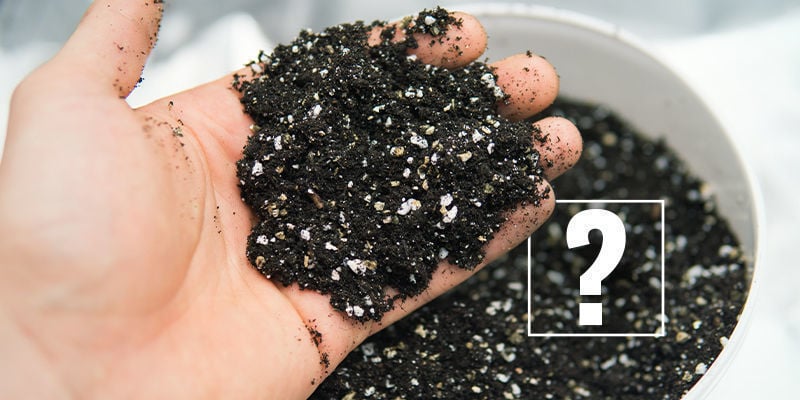
Humic and fulvic acid are two terms that often pop up in forums and blog posts about gardening and cannabis cultivation. Unfortunately, few sources properly explain the differences between them, leading to misuse and misunderstanding. Below, we take a detailed look at humic acid and fulvic acid to help you understand their key differences and similarities.
UNDERSTANDING SOIL COMPOSITION AND HUMUS
In order to understand humic and fulvic acids, we first need to establish a basic understanding of humus. Humus is a natural material that makes up roughly 2% of healthy topsoil (the rest of which consists of 45% minerals, 50% air and water, 2% dead organisms, and roughly 1% living organisms). Humus is composed of humin, fulvic acids, and humic acids—three highly stable chemical molecules that are resistant to further decay. Humus is produced over thousands of years through the gradual decomposition of organic matter (such as plant and animal remains) as well as the degradation of rocks and minerals.
d as appropriate, and the use effect can be guaranteed; at the same time, bio potassium fulvate can also be used as a finished product of foliar spray fertilizer, the effect is outstanding.
WHAT IS HUMIC ACID?

Humic acid is actually an umbrella term that refers to a variety of compounds known as “humic acids”. These are long-chain compounds with a high carbon content, making them an ideal food source for soil microbes (which help to fuel the soil ecosystem). Humic acids are large molecules (the second largest in humus after humin) with a general molecular weight of over 300,000. These compounds help to improve the physical characteristics of soil; specifically, humic acids (which are negatively charged molecules) can help to chelate soil and trap positively charged molecules (cations) such as iron, manganese, copper, and zinc. Plant roots, which have a stronger negative charge than humic acids, can then absorb these compounds from them. It is thought that humic acids may improve the cation exchange capacity (CEC) of soils by trapping cations and keeping them from leaching out of the soil during watering.
Humic acids have a dark black colour, are highly resistant to degradation, and only dissolve in water in alkaline conditions. While some humic acids contain fulvic acids, fulvic acids do not contain any humic acids.
WHAT IS FULVIC ACID?

Like humic acids, fulvic acids are produced by the decomposition of organic matter, rocks, and minerals, and are a key component of humus. However, unlike the former, the latter are much smaller chemical compounds, with a general molecular weight of less than 500 and bearing a light brown colour. Like humic acid, fulvic acid is also an umbrella term, and refers to two different chemical compounds: mineral-bound acids known as fulvates, and free-form fulvic acids made up predominantly of carbon, hydrogen, oxygen, and nitrogen. Unlike humic acids, fulvic acids dissolve in water at all pH ranges. Due to their smaller size, fulvic acids are much easier to absorb by plants, and because they can bind to nutrients and minerals, can directly increase a plant’s nutrient uptake.
To better understand the important differences between fulvic and humic acids, let’s recap:
- “Humic acid” and “fulvic acid” are two umbrella terms that refer to a variety of different compounds.
- Both humic and fulvic acids are produced through the natural decomposition of organic matter, and are components of humus.
- Humic acids are large, complex compounds with a higher molecular weight than fulvic acids.
- Humic acid is resistant to further decomposition, and benefits soil structure as well as soil life.
- Fulvic acids are smaller molecules with higher amounts of oxygen and less carbon, and can be absorbed into plants via their roots or foliage.
- Fulvic acids can bind to nutrients, and thereby directly increase plant nutrient uptake.
- Humic acids are dark brown or black in colour, while fulvic acids are light brown.
- Both humic and fulvic acids are essential for plant health.
WHAT ARE THE BENEFITS OF HUMIC AND FULVIC ACIDS FOR CANNABIS?
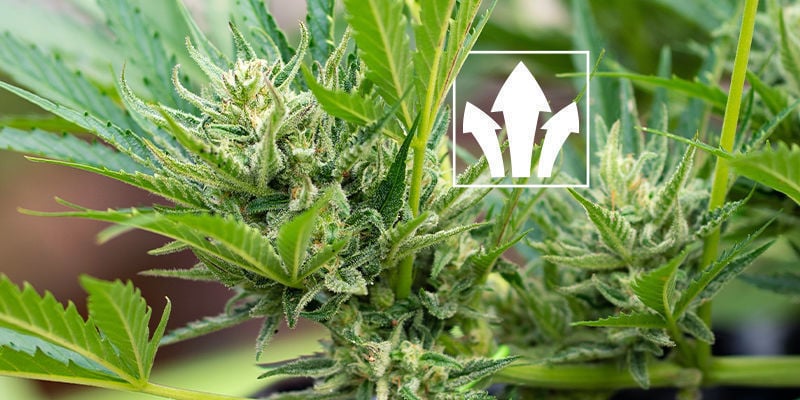
Humic and fulvic acids are closely related but unique compounds that both play an important role in creating high-quality soil and growing healthy plants. Here’s how these acids can benefit cannabis.
IMPROVE SOIL
Thanks to their large structure, humic acids improve the physical and chemical characteristics of soil. And with their high carbon content, they act as food for soil microbes (such as bacteria, fungi, and insects) and can therefore support the soil ecosystem.
REPLENISH ORGANIC MATTER
Humic acids can be used to reintroduce important organic matter into old soil. Overfarming, the use of chemical fertiliser and insecticides/pesticides, as well as weathering all contribute to the depletion of humus from soil. Adding humic acids back into old soil can help to replenish its levels of organic matter, attracting microbial life back into it.
BOOST NUTRIENT UPTAKE
Both humic and fulvic acids can increase plant nutrient uptake. Humic acids, while too large to be assimilated by plants, can trap nutrients in the soil, making them more available to the roots. Fulvic acids, on the other hand, can bind to nutrient molecules and are small enough to be absorbed by plants, directly increasing nutrient uptake.
PROMOTE STRONG ROOTS
By improving soil quality, both humic and fulvic acids promote the growth of strong roots, which make for strong, healthy plants.
BOOST STRESS RESPONSE
Various studies show that plants grown in soil rich in both humic and fulvic acids respond better to stress (both environmental and pest-related).
WHAT ARE SOME SOURCES OF HUMIC AND FULVIC ACIDS?
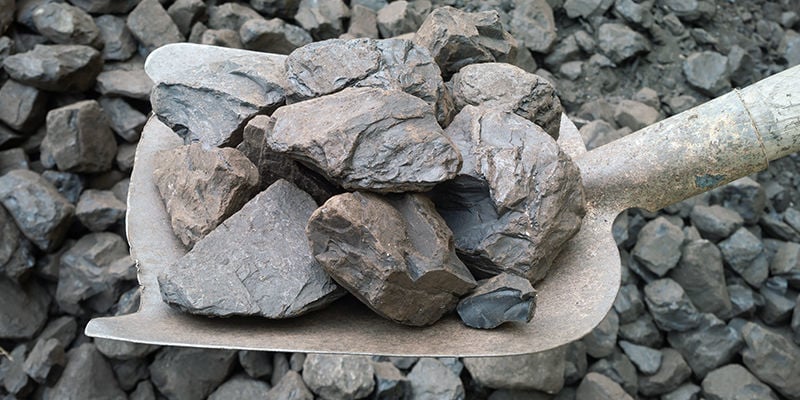
The richest natural sources of both humic and fulvic acid are lignite (brown coal) and leonardite (a predecessor to brown coal). Both substances take thousands (or even millions) of years to form and contain compressed dead organic and mineral matter. Both lignite and leonardite are mined industrially and processed into humic and fulvic acid fertilisers.
Besides buying humic and fulvic acid fertilisers from a store, you can also source these acids (albeit in lower concentrations) from humic substances. Humic substances are also made of decayed organic matter, but take much less time to produce than leonardite or lignite. Some examples of humic substances include:
- Worm castings
- Compost
- Peat
- Manure
- Guano
HOW TO USE HUMIC AND FULVIC ACID ON CANNABIS PLANTS
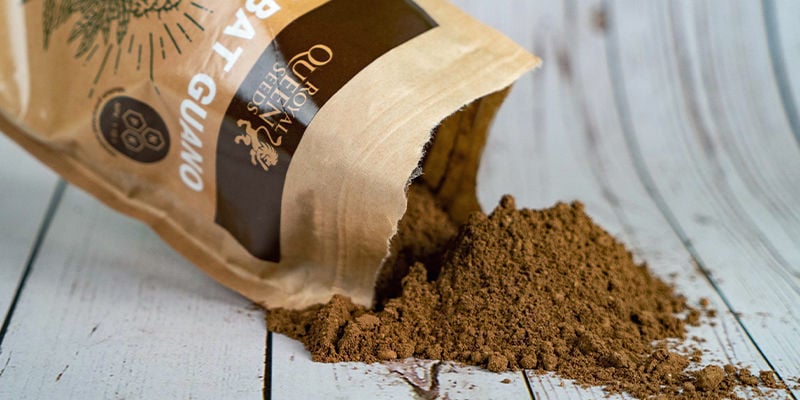
So, humic and fulvic acids clearly play an important role in building strong soil and growing healthy cannabis plants. If you’re looking for ways to use these acids in your grow, there are a few ways you can do so.
USING HUMIC AND FULVIC ACID FERTILISERS OR SOIL AMENDMENTS
The easiest way to incorporate fulvic and humic acid into your cannabis grow is to use a store-bought fertiliser or soil amendment. Soil amendments (which typically come in a granular or powder form) can be mixed directly into your soil before planting. They can also be used to top-dress your plants, or can be dissolved in water and applied like a liquid fertiliser.
Alternatively, liquid humic and fulvic fertilisers are highly concentrated and designed to fully dissolve in water to better penetrate to the soil and reach your plants’ roots. These tend to be applied periodically like other fertilisers. Whether you choose to use a liquid humic/fulvic concentrate or a powder/granular product is up to you. Just keep in mind that powdered and granular products will likely take longer to break down and penetrate the soil than a concentrated liquid product.
USING HUMIC SUBSTANCES
Rather than buying humic/fulvic acid fertilisers, you can use some of the aforementioned humic substances. Keep in mind, however, that humic substances will likely contain much lower concentrations of humic and fulvic acids than a dedicated fertiliser.
HUMIC SUBSTANCES AS SOIL AMENDMENTS OR FOR TOP-DRESSING
Humic substances such as compost, manure, worm castings, and guano all make great soil amendments. If you’re preparing your soil yourself, mix whatever humic substance you prefer directly into your substrate with your other amendments at the following ratios:
- 1 part compost to 4 parts soil mix
- 1 part manure to 5 parts soil mix
- 1 part peat to 1 part soil mix
- ¼ cup of guano to 15–20l of soil mix
Alternatively, you can use compost, manure, or guano to top-dress cannabis plants (note that peat is best premixed into soil before planting). In this case, add roughly ½ inch of the humic substance of your choosing to the topsoil and rake gently to incorporate it.
USING HUMIC SUBSTANCES TO MAKE TEAS AND FOLIAR SPRAYS
Besides adding them directly to soil, you can also use humic substances to make your own compost tea or foliar spray. Simply steep the compost in unchlorinated water for roughly 12 hours to make the brew, and use as a root fertiliser or foliar spray.
DO YOU NEED FULVIC OR HUMIC ACID TO GROW CANNABIS?
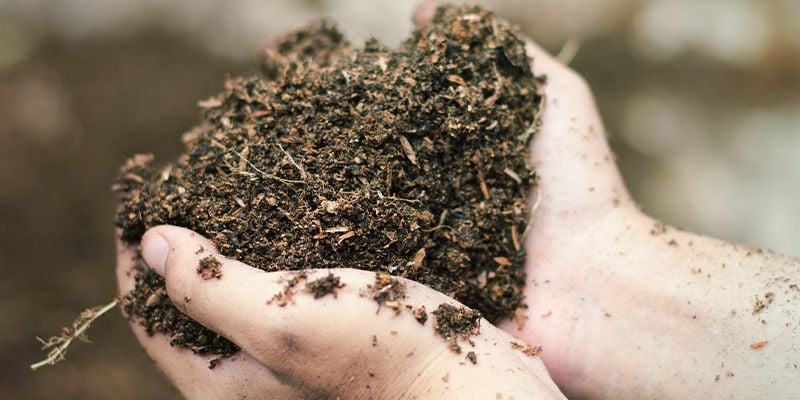
Humic and fulvic acids play a crucial role in supporting the health of your growing medium and therefore your plants. Many quality store-bought or organic soils already contain some amount of these acids; however, you can use the methods outlined above to ensure your soil always features a healthy amount of both humic and fulvic acids.


